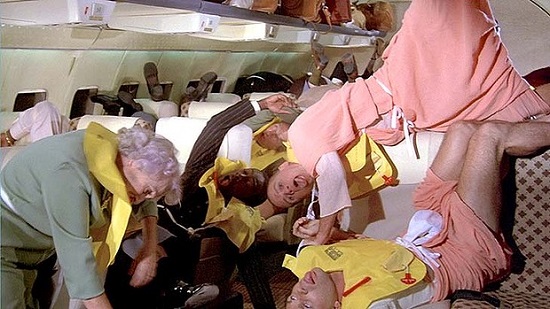When the market goes bidless, it's too late to preserve capital, never mind all those life-changing gains.
Everyone with some gray in their ponytails knows the stock market has ticked every box for a bubble top, so everybody get in crash positions: 
Let's run through the requirements for a bubble top:
1. Retail investors (i.e. dumb money) are all in and buying the dip with absolute confidence. As the gray-ponytail traders know, there are many moving parts to the retail dumb money going all in:
-- The pain of the last bubble bursting has finally faded
-- Prudence and caution (i.e. holding cash in low-risk accounts) are thrown to the wind as the more money you put into the bet, the bigger the rewards.
-- Punters realize the key to the really big gains is maxing out margin and leverage, preferably by foregoing owning the underlying equity in favor of options and futures contracts.
-- Confidence in the Federal Reserve's god-like powers and determination to never let stocks decline more than a few percentage points over a few hours or days is off the charts.
-- Confidence that this is a new era and so old rules no longer apply is in the stratosphere. Retail punters believe that cryptos, NFTs and blockchain are can't-lose bets as these are A) unstoppable and B) revolutionizing finance and the economy. As for stocks, retail traders have discovered the power of the herd: if the herd all buys call options by the thousands, this forces market makers to buy the underlying stocks, pushing the price higher in a self-reinforcing feedback loop that is guaranteed to succeed.
-- Retail investors view all these bets as extremely low risk and so there's no financial sense in hedging bets or limiting margin debt, leverage or risk, because risk has been abolished by the Fed Put.
2. Insiders (i.e. the smart money with asymmetric knowledge of what's actually going on beneath the surface PR) are selling with unprecedented enthusiasm: Ponzi? Insiders Dump Stocks To Their Own Companies At Record Pace.
The gray-ponytail traders know the only way to anticipate the next trend change and benefit from this knowledge is to follow what the smart money (insiders) are doing, not saying, because they know the smart money will always talk their book, i.e. promote a confident happy story about future prospects even as they're dumping their own shares as fast as they can without crashing an increasingly precarious market.
3. Market leadership shrinks from 50 to five companies even as the majority of stocks are faltering. The absolutely classic sign of a bubble top is the indices continue rising even as the majority of stocks stagnate or enter Bear Market territory with stairstep declines.
How can indices continue marching higher if 80% of stocks are falling? Easy: big gains in a handful of mega-cap stocks. The current concentration of market-moving heft in a few mega-tech stocks is unprecedented. Last week all three market indices--Dow-30, S&P 500 and the NASDAQ--were all led higher by one company, Apple, which added hundreds of billions of dollars in capitalization in a few days.
When the market depends on a Nifty Fifty for the vast majority of its gains, it's already getting toppy, but when it's entirely dependent on a Fabulous Five for gains then the top is in.
4. Short sellers give up and short interest falls to multi-year lows. The gray-ponytail traders can savor the irony: as short-sellers give up and the percentage of shares sold short dwindles, the retail Bulls declare victory: haha, we've wiped out the shorts and Bears! We won!
What the jubilant Bulls don't understand is the hated short-sellers were the last line of defense against a market decline gathering momentum into a crash, as shorts covering their bets by buying stocks are a reliable source of buying when greed turns to fear. Wipe out the shorts and there's nobody left to buy as stocks tumble and margin calls proliferate.
5. Buy-the-dip euphoria continues sucking in money even as market internals weaken and extremes of risk are ignored. When gamblers are putting all their capital on the table and boosting the bets with margin and leverage, the dumb money is all-in; not only do they not have any cash left, their sky-high margin debt guarantees even a modest dip will result in margin calls and forced selling: the self-reinforcing momentum everyone assumed could only be bullish reverses into selling that begets more selling.
6. Punters are confident that the Federal Reserve will manage to tamp down inflation while keeping the stock market at a permanently high plateau. Never mind rising real rates, never mind the need to reduce monetary stimulus as the only means to take the air out of inflation--the Fed will never let stocks decline. The Fed Put is unbreakable.
And so here we are: every box of a bubble top about to burst with unimaginable force is ticked. Traders sporting gray streaks in their ponytails know from experience that every bubble pops, and all the endless analysis after the fact boils down to: things changed.
Timing is everything in a crash: as Thomas Hobbes is reputed to have observed, "Hell is the truth seen too late." Well said, T.H.: when the market goes bidless, it's too late to preserve capital, never mind all those life-changing gains.
Has it broken the 200 day moving average yet?
ReplyDelete